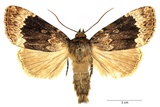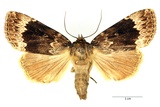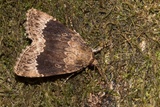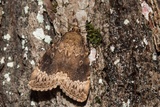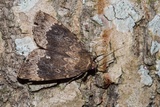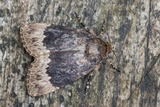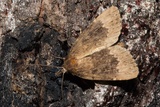Amphipyra perflua (Fabricius, 1787) Species
Last modified: Nov. 4, 2025, 3:15 p.m.
A very rare and local species, mainly seen in the three southern provinces of Belgium. Outside this area are usually wanderers.
Details
- Classification
- Family: Noctuidae > Subfamily: Amphipyrinae > Genus: Amphipyra > Species: Amphipyra perflua
- Vernacular names
- Grote piramidevlinder (NL), Larger Pale-tipped Black Moth (EN), La Noctuelle efféminée (FR), Gesäumte Glanzeule (DE)
- First mention in Belgium
- De Sélys-Longchamps E. 1844. Énumération des insectes Lépidoptères de la Belgique. — Mémoires de la Société royale des Sciences de Liége 2: 1–35. On page 10 (as Amphipyra perflua F.). view page
- Status
-
Native
Distribution
Bionomics
Hibernates as an egg. Pupation in a cocoon among plant debris or under the ground.
The adults come to sugar, wineroping and to light.
No pictures yet!
Flight periods
The adults fly in one generation a year from mid-July till the end of August.
Observed on
- Host plant (species):
- Populus tremula, Populus nigra, Corylus avellana, Fagus sylvatica, Ulmus glabra, Prunus spinosa, Ligustrum vulgare and Ulmus minor
- Host plant (genera):
- Salix, Malus, Alnus, Crataegus, Lonicera and Ulmus
- Substrates:
- Deciduous trees
The larva lives on a range of trees and shrubs like Populus tremula, Populus nigra, Salix, Corylus avellana, Alnus, Fagus sylvatica, Ulmus campestris, Malus, Crataegus, Prunus spinosa, Ligustrum vulgare or Lonicera.
No pictures yet!
